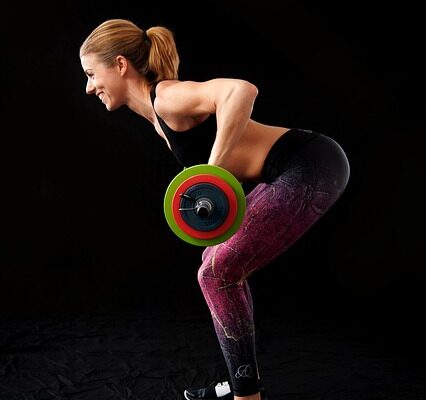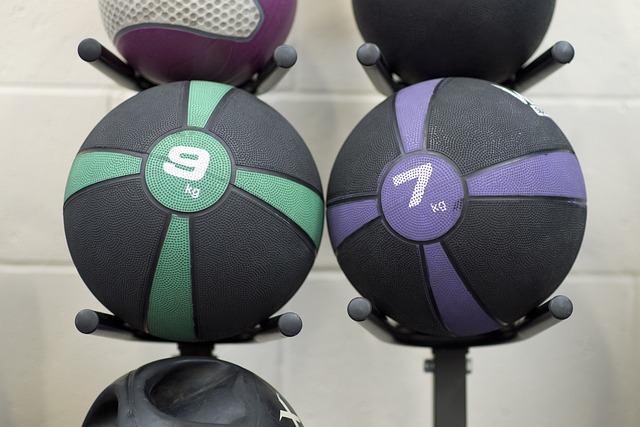Glute Exercises and activities will help you grow a stronger buttock. The gluteus maximus (the largest muscle), the gluteus medius, and the gluteus minimus are all separate muscles.
What Exactly Are Glutes?
The glute muscles are found beneath the fatty tissue of the buttocks. They are made up of three muscles: the gluteus minimus, the gluteus maximus, and the gluteus minimus. Your glutes are massive, powerful muscles that assist you in walking, running, sitting, standing, and a variety of other motions. Strength training and correct nutrition can help you grow your glutes.
You can’t always modify the shape of your glutes, but with the appropriate glute exercises, you can make them firmer and stronger. The goal is to train all of the muscles from various angles using various workouts and aerobic activities. To target and develop your glutes, try any of the glute exercises listed below.

Squats
Squats are one of the most effective workouts for strengthening the gluteus maximus, the largest muscle in the lower body. These work your hips, thighs, calves, and core as well.
How to Do Squats
Place your feet hip-distance apart. Hold weights at your sides or your shoulder level for increased intensity.
Squat down by bending your knees. Maintain your knees behind your toes (picture pushing your buttocks out behind you while keeping your body straight and tensed).
To stand, press your heels into the ground.
Repeat for 2–3 sets of 8–16 repetitions.
If you’re looking for a workout, try the Bulgarian split squat. You must balance on one leg while lifting the other on a sturdy bench or chair. The maneuver distributes the burden to the front quads, although the glutes are also stimulated.
Lunges
Lunges are a popular butt exercise. In a staggered stance, you must rely heavily on your glutes to keep your body stable. The stance also puts additional strain on the glutes on the front of your legs. 2 Lunges also engage additional muscles such as your hamstrings, quads, and calves.
How to Perform Lunges
Stand with your feet apart, one forward and one back (about 3 feet apart).
Bend both knees and lunge straight down, your back knee pointing toward the floor.
Avoid lunging forward over your front toes. Maintain your front heel on the ground.
To stand, press your heel into the ground.
Rep 1–3 times for a total of 12–16 reps. Hold some weights for extra intensity.
Lunges are great because there are so many different variations. You may easily mix it up to target different muscles. Elevate your back foot on a platform or step, for example, to really challenge both legs.
Step-Ups
Step-ups are another excellent butt work workout. To begin, select a platform that is high enough so that you can bend to 90 degrees. If that’s too much, use the second stair on a staircase and balance yourself by holding onto the rail.
How to Do Step-Ups
Place yourself in front of the step or platform. Step forward with your right foot.
Step up, pressing into your heel and touching your left toe to the step.
While keeping your right foot on the step, lower your left foot to the floor. To increase the intensity, bend your knee into a lunge.
Repeat on each side for 1 to 3 sets of 12 to 16 reps. Try to hold weights or a resistance band under your standing foot for added intensity.
Lift your body by pushing into your heel and concentrating all of your weight on your stepping leg.
Gently lower yourself down, just touching the toes of your other leg to the ground. You’ll truly feel this motion if you take it carefully and focus on the working leg.
Squats sidestep using resistance bands.
Unlike the preceding workouts, which mostly targeted the gluteus maximus, this move focuses on the smaller gluteus medius and minimus. Don’t worry; because you’re squatting, the gluteus maximus is still active. 1 Hold the grips of the resistance bands with your arms bent for an isometric biceps exercise to make this a wonderful whole-body workout.
Squats with a Sidestep
Employ a medium-light tension band. Holding both handles, stand on it.
Maintain strain on the band by taking a broad stride out to the right into a squat.
Step in with your left foot. Step out and squat to the right until you reach the end of the room (or as far as you can).
Continue the process for 1 to 3 sets of 8 to 16 steps.
Glute Squeeze / Hip Thrust on Ball
Another excellent glute exercise is the hip thrust on a ball. The ball provides some instability and forces your entire lower body to work. Holding weights on the upper thighs intensifies the exercise.
How to Do Hip Thrusts
Start in a bridge position, with your head on the ball and your buttocks elevated. For increased intensity, place weights on your thighs.
Bring your hips down to the earth. Make an effort not to let the ball roll around.
Contract your glutes to return to the beginning posture.
Repeat for 1–3 sets of 8–16 repetitions. For a more intense motion, try elevating your toes.
Hip Extensions
While the previous compound exercises are ideal for exercising numerous muscles at once, hip extensions are ideal for targeting the glutes in a more targeted manner. Some core and shoulder activities will also be beneficial.
How to Do Hip Extensions
Go down on your hands and knees, hands directly under your shoulders, knees directly under your hips.
Lift your right leg, keeping the knee bent, up until it is leveled with your glutes.
Your leg should be lowered.
Rep 12 to 16 times on each side.
Use ankle weights or squeeze a weight in the back of your knee to increase the intensity.
Single-Legged Deadlifts
Deadlifts are wonderful for your glutes, hamstrings, and lower back, but this one-legged variation is especially effective for your buttocks. Everything done on one leg adds effort and engages your stabilizer muscles to keep your body balanced.
Remember that perfect form is essential when performing deadlifts. If you have back pain, you should skip this workout.
How to Do Deadlifts
With the weights, extend your left leg behind you (approximately a foot) and rest lightly on your toes.
Tip the weights from your hips and slowly descend them to the floor as far as your flexibility allows.
Keep your back straight (or with a natural arch). To keep your back safe, keep your abs clenched.
To bring your working leg back up, squeeze the glutes.
Do 1–3 sets of 8–16 repetitions on each side.
Additional Exercises to Strengthen Your Glute
Cardiovascular activities can also be an effective technique to work your glutes, in addition to the prior strength exercises. To strengthen your glute strength, try any of these workout activities.
Walking up an elevation automatically engages your glutes. You’ll get even better exercise if you wear a backpack.
Kickboxing incorporates complicated combos that strengthen your upper and lower body as well as your abs. A 140-pound woman, for example, can burn up to 500 calories in 45 minutes of kickboxing.
Hiking strengthens the glutes while also burning a lot of calories. Not only do you work more when trekking uphill, but you also burn more energy when the altitude changes. Hiking burns roughly 390 calories per hour for a 140-pound person. Try adjusting the incline on your treadmill to simulate trudging up a hill if you live in a flat location.
Cycling is another excellent technique to work the glutes. If your area lacks hiking paths, consider cycling (indoors or out).
To Conclude on Glute Exercises
Glute exercises are an excellent technique to complete your lower body workout while also preventing or correcting muscle deficiencies and imbalances between your glute muscles.
Concentrating on appropriate techniques is critical for achieving success while avoiding damage. Maintain minimal resistance until you’ve mastered the technique, or begin with a reduced version of an exercise to gradually and safely gain strength.
However, if you are unsure how to perform an exercise correctly or if you are attempting to correct knee or back pain on your own, it is best to consult with a physical therapist or certified personal trainer to ensure that you are performing each movement correctly and that you are performing exercises that will efficiently target your specific needs.
If in doubt, consult a licensed personal trainer. They can direct you through the proper motions and guarantee that you feel the burn in all the right areas.


